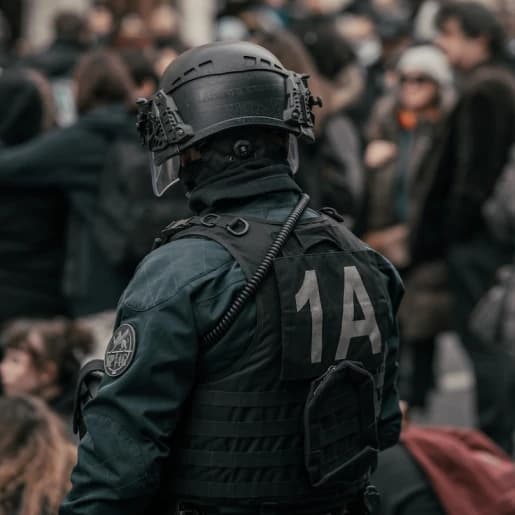Armed Guard Training
Armed security must be responsible because they watch and protect people. However, brandishing a firearm is the last resort.
Places with an armed or unarmed security guard show a reduced risk of trouble in the vicinity. However, it’s not a job for everyone. Operatives in the security industry must be willing and able to stand for long periods, walk and sometimes run, and be happy to work alone.
As a guard, you might be stationed at one place for a while or at different regions daily. You may work during the day, at night, or a mixture of both. A common requirement for most states is for the students who want to enroll in security training classes to have at least a high school diploma level education—good and effective communication skills are necessary to reduce potential altercations.
Security guards should remain calm and composed and, more importantly, follow their training and the operational procedures required by employers. As the face of the brand, a guard needs to have a tidy appearance.
Armed guards require additional coaching (usually +20 hours of class) to receive a license to carry a weapon—this includes time at a firing range.


Starting Training — Choosing a Training Program
Seek accredited companies that offer certification in the region you want to work in before booking a course. Contact one of our advisors during business hours if you are an individual or company wanting armed or unarmed security training for your staff. We are more than happy to assist you.
Let’s take a closer look at how to obtain a security guard certification, focusing more on the state of Illinois: Get a Permanent Employee Registration Card (PERC) from the Illinois Division of Professional Registration to work as a licensed guard in Illinois. A PERC card proves that you have undergone a background check and fingerprinting process, allowing you to work without and not go through the security training concepts and courses in an unarmed class.
Here's how to obtain a PERC card in Illinois, step by step:
- Meet the eligibility requirements: 18+ or have a valid social security number.
- Complete security guard training: Many companies in Illinois require a minimum of 20 hours of education through a local training facility, community college, or online.
- Submit fingerprints via a live scan vendor.
- Submit the application: Fill out the Illinois PERC card application online with a passport photo. This cost is $55 (at the time of writing), paid to the Department of Financial and Professional Registration.
Apply with local security companies once the PERC card arrives in the mail.
You'll need additional training to work as an armed guard. To be eligible in the state of Illinois, you must:
- Meet the age requirement of 21+
- Have a valid Illinois driver’s license
- Complete firearms drills
- Pass written exams
Firearms training includes 20 hours of drills in addition to the basic training for an unarmed security guard. To be licensed to carry a firearm, an armed security guard must have a shooting accuracy of +70% after 50 rounds in Chicago, IL.
How Long Does the Training Last
All it takes to complete an armed security training course is 8–40 hours or more, depending on the program, region, and units. Employers often encourage ongoing additional training and development, supporting guards to upgrade their qualifications. Advancement opportunities exist for hardworking and dependable guards.
Security Guard License
Accreditation as an unarmed or armed security officer is almost guaranteed if class requirements are met, so you must prepare in advance. Approval of application by the state or government may take a few weeks after completion of your classes.
Common endorsements for students include:
- Armed certificate course: Verifies that you can operate as an armed security personnel carrying a firearm on duty.
- Criminal justice system course: Holders of this certificate understand state law and handling felons.
- Occupation health and safety: A person with this certification can handle health emergencies and is often the first responder.
- Computer service technician: Though your employer might train you on the basic use of gadgets like CCTV monitoring, a CST certificate increases your knowledge of computer systems use.
- Conflict resolution management: This training gives the guard a better chance of taming heated situations.

Armed security training follows unarmed security guard training classes. The certification covers use of force drills, handling small firearms, pistol/ammunition nomenclature, cleaning and maintenance, loading & unloading, shooting fundamentals, isometric tension, sight alignment, trigger control, and dry firing practice.
Contacts us to register for an upcoming course
Who gets to have all the fun?
Individuals
Looking to brush up on some skills and obtain certifications? Our courses are professional grade and will prepare you for anything.
Teams
Workshops, team building and corporate exercises are great opportunities to learn practical skills.
Professional
Our courses are used for training foreign police and military forces to brush up on skills, complete certifications and enhance their expertise.
FAQ